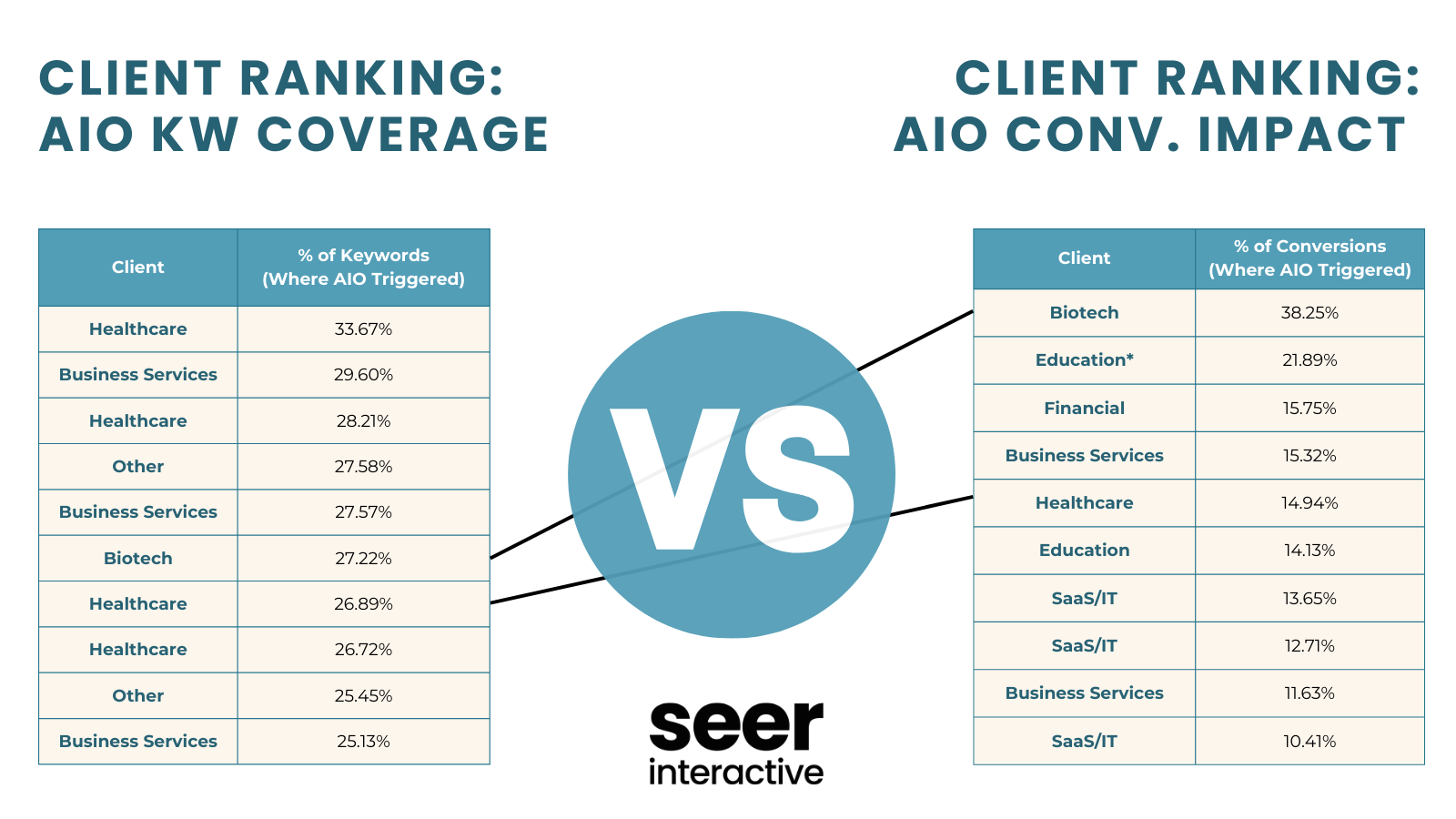This is part 2 of 5 posts on how integrated teams can build killer assets for your eComm website.
Part 1: Prioritization Part 2: Audience Interviews Part 3: Design & Creation Part 4: Paid Social Part 5: Organic Promotion
-----
We all have experience in our industries, but that can sometimes give us blinders into thinking we know everything about our audience. It’s important to get the audience’s perspective and see what they’re really looking for and need.
Sometimes, we can also have the tendency of cycling one anecdote or another any time a subject comes up, but it’s good to get new perspectives to refresh what we know about people and expand our understanding of them, their journey, and their needs.
From a content perspective, conducting interviews allows us to home in on what topics we really need to cover based on audience need. When we worked on Staples' Chair Buying Guide we knew we wanted to focus on chairs, and interviews allowed us to gain an understanding of the common questions we needed to address.
Setting a research objective & plan
- Consider the expected output, but think beyond that to the outcome
- Determine what questions you’ll need to ask to hit your objective
- Identify what resources you’ll need to answer these questions
Setting a research objective and project plan keeps us focused and on track.
With Staples, we knew we wanted to create buying guides for chairs, and that was the expected output, but the research objective should be more specific than that. For example, what we really wanted to know is: What are the biggest questions people have when they’re looking to buy chairs, and what are their biggest frustrations that we can help ease?
At the end of the day, we wanted to create a resource that would solve these problems for people
From that objective, we can think about what specifically we’d need to accomplish this goal. We needed to understand:
- If someone recently bought a chair, what information did people wish they had when they went through this process?
- Where in the journey did they feel frustrated? What would have helped?
From there, we started to put together interview questions and determined what resources we would need to answer these questions.
For the Chair Buying Guide, we were able to use interviews with people who recently bought or want to buy a new chair. Other sources of data that are often utilized are analytics, user testing and survey results.
Determining who to interview
Another important thing to consider is who to interview. Most often your target audience members will be those you want to interview for the specific asset. This could mean existing customers, prospects, etc.
For the Staples work, it was interviewing people who recently bought or who are currently in the market for chairs. We were able to learn directly from them about their journey, the triggers that kicked off their search, what information they’re looking for and what sites they browsed.
The benefit of interviewing audience members is getting their perspectives and experiences directly, as opposed to making assumptions.
Another group that’s important to interview are topic experts or subject matter experts (SME’s). They are especially important if you are creating content for a specialized product that you may not be the expert on.
Experts can provide a background of the audience to give you context before you interview them. They can also discuss any important things to know about the product, such as specific verbiage and background.
We interviewed some SMEs for the chair guide to get their perspective, as well as tips from experts to include within the asset itself, which was incredibly valuable.
Creating interview questions
From a content perspective, conducting interviews allows us to home in on what topics we really need to cover based on audience need.
One thing to keep in mind when putting together interview questions is the flow of the interview. When conducting interviews, we want people to think back to the process that they took when they bought a chair or were searching for one to help them remember their experiences. One way to do that is by structuring the questions according to the steps in their journey.
For example, we’ll want to start asking about what triggered target users to start searching for a chair, then get into how they searched and what information they were looking. We didn’t want to start with what chair they bought and then trace back up the funnel.
Anticipate responses and create follow-up questions
Expert researchers are able to do this on the fly based on experience, but I recommend anticipating what potential answers could be, then put together follow-ups to continue down that trail. This will help you during the interview to keep digging further vs. just moving to the next question.
For example, if we ask how did you start searching for chairs, and someone says they went online, we can have follow-up questions prepared to remind us to ask about what words they used to start searching, what websites they went to, etc.
Mark 5-7 priority questions in your list to focus on what’s most important
When conducting interviews, you’ll have a limited amount of time with the person, so you want to make sure we’re getting our most important questions answered.
I recommend putting together your ideal full list of questions you’d like to ask, then go back and mark which ones are the most important. That way, if an interviewee is taking a little longer to answer questions than anticipated and time is running out, you know where to skip to.
The best way to determine which questions are a priority is to think back to your research objective and choose questions that can directly help answer that objective.
Example interview questions
- Take me back to the day when you first decided you needed a new chair.
- What problem were you trying to solve?
- Why did you decide now is the time to find a solution?
- What did you hope would be changed by getting a new chair?
- How did you start looking for a new chair?
- Where did you start looking?
- What type of information were you looking for when you began searching?
- What questions did you have when looking for a new chair?
- What were your biggest concerns when looking for a new chair?
- How did you feel throughout your journey?
- What features or qualities did a chair need to have for you to put it in your consideration set?
- Were there any websites or content that were particularly helpful?
- Were there any questions you weren’t able to find the answer to in your research?
Conducting interviews
Ask open-ended questions
In interviews, we want to get people to open up and share their experiences. To do this, we need to ask open-ended questions to prompt them to give details about their journey and their thoughts to learn as much as we can instead of only getting short answers.
Because you’ll be putting together a question list ahead of time, you can prepare for this, but when you’re asking follow-ups, it’s important to keep this in mind.
For example, if you’re asking someone about a website they mentioned visiting, you could be tempted to ask if they like it or not, which someone could just say yes or no to. We want to focus on getting deeper, so we can ask “Does this website solve your needs? Why or why not?”
Be comfortable with pauses
One of the hardest parts of interviewing is getting comfortable with pauses when interviewees take time and think before they answer. These pauses sometimes take longer than in a normal conversation, and honestly, they can feel a little awkward.
It can be tempting to fill want to fill the silence by giving them potential answers, like, “maybe you were concerned about pricing or features,” but it’s key to be patient and give them time.
If it’s been over five seconds with no response, you could ask if they need you to repeat or rephrase the question, but that should be it.
You don’t want to be putting words in your interviewee's mouth and bias their response, so try to take a breath and allow for silence.
Be present during the interview
It’s tempting to take notes and conduct the interview to get it done in one fell swoop, but that’s not the best idea. If you’re taking notes, you’re not listening, and that’s what you’re really there for.
Either ask the interviewee for permission to record the interview (we typically use UberConference, which offers this for free) and listen back later to take notes, or have another team member in the room to take notes.
One tip that our team recommends is jotting down the time of when an interesting insight comes up so we can go back to it afterward, but other than that, focus on leading the interview and asking relevant questions.

